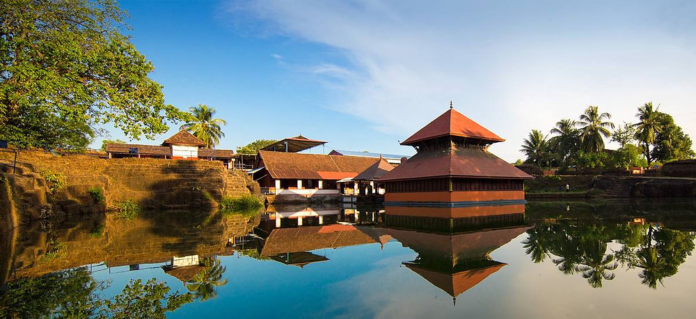
Have you ever heard of a temple situated in the middle of an impressive lake spreading to around 302 feet?
If not, let’ take you to this pristine Ananthapura Lake Temple which is situated in Kasaragod District of Kerala, South India. This lake, where the temple is situated, is gifted with a perennial supply of pure spring water.
The principal deity is Lord Vishnu. One of the key features of the temple is that the original idols in the sanctum sanctorum were not made of metal or stone, but it comprises a rare combination of more than 70 medicinal materials called `kadu-sharkara-yogam.’ These idols were replaced by Panchaloha metals in 1972. Efforts are going on now to reinstall the idols made with `kadu-sharkara-yogam.
Also, there are ruins of temples all round the lake which stand testimony to the fact that it was part of a great temple complex.
The sanctum sanctorum of the temple along with Namaskara-mandapam, Thitappalli, and shrines of Jala-Durga and the entrance of the cave are located in the lake. The Namaskara-mandapam is unique because it is connected to the eastern rock by a foot-bridge which is the only passage to the Sreekovil.
The Lord Vishnu idol is in a sitting pose over a five-hooded serpent king Lord Anantha. The lake temple is open to all visitors regardless of caste or creed.
The temple showcases an excellent collection of wood carvings on the ceilings of the Mandapam where carvings depict the incidents taken from the stories of the ten incarnations of Lord Vishnu.
The Nava-grahas (nine planets) are painted at the Muktha-mandapam.
The temple has yet another story, a story of a crocodile, Babiya. The 75-year-old vegetarian crocodile was once a temple attraction as it was loved by everyone, the priests and devotees alike.
Meanwhile, the mysterious legacy of Sri Ananthapadmanabha Swamy temple continues! A year after the death of Babiya, another crocodile appeared in the lake near the temple.

